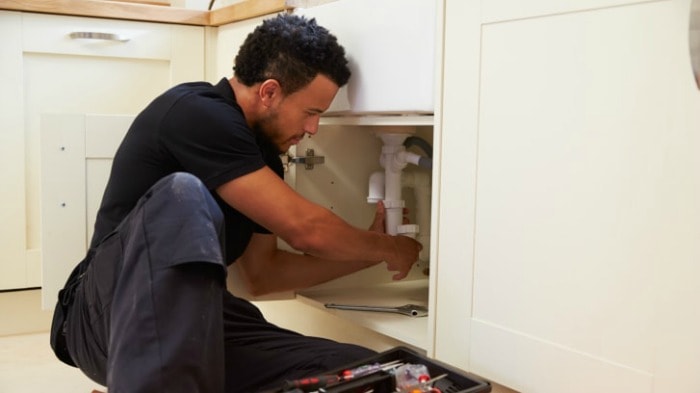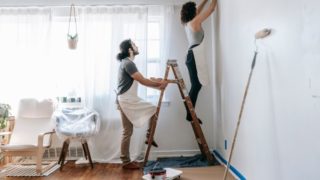Have you been looking for related information around How can you handle tenant plumbing issues effectively?

Taking care of pipes problems in rental buildings successfully is essential for maintaining occupant complete satisfaction and protecting the property's value. Whether you're a landlord or a home supervisor, recognizing how to attend to these usual issues can save you time and money while making sure compliance with lawful obligations. Below's a step-by-step overview on how to take care of plumbing concerns in rental residential properties.
Document Everything
Maintain comprehensive records of all reported pipes problems and the activities taken to fix them. Documentation should consist of days, summaries of the problem, communication with renters, and receipts from contractors or plumbings. This details can be vital for insurance coverage claims, tax deductions, and lawful protection.
Usage Qualified Professionals
Always make use of certified and insured specialists for substantial pipes repair services and installments. This makes certain that the job depends on code and can assist avoid responsibility concerns in case of accidents or additional damage. It additionally comforts occupants that fixings are being taken care of skillfully.
Develop Clear Communication
Motivate occupants to report any type of pipes issues as soon as they happen. Supply several communication channels such as phone, e-mail, or an occupant site to make it simple for them to reach out. Motivate responses to these records can protect against minor issues from intensifying into significant troubles.
Inform Renters
Educate your tenants regarding what constitutes a plumbing emergency situation and what does not. Offer standards on exactly how to handle small issues themselves, such as utilizing a plunger to unclog a bathroom. Additionally, inform them about what they ought to stay clear of putting down drains pipes to prevent clogs, such as grease, coffee grounds, and non-biodegradable items.
Routine Maintenance
Execute a routine maintenance routine for all pipes systems in your service properties. Normal checks can assist determine and deal with problems like leakages, slow drains, or corroded pipelines prior to they come to be serious. Think about working with an expert plumbing technician to examine the residential or commercial properties each year or semi-annually.
Quick Reaction to Emergencies
Have a plan in position for reacting to pipes emergencies. This need to include having the contact information of reputable plumbing services that offer 24/7 emergency situation repair work. Quick action is vital to reduce damage in scenarios like ruptured pipelines or extreme leakages.
Preventive Upgrades
Take into consideration updating older pipes systems and components to more modern, effective versions. This can reduce the frequency and severity of pipes problems and lower lasting maintenance expenses. It's also a selling point for possible lessees who value upgrades and contemporary attributes.
Lessee Move-Out Inspections
Conduct complete pipes checks during move-out assessments to ensure that any type of concerns are determined and addressed before a new renter moves in. This stops disagreements with brand-new lessees over pre-existing conditions and makes certain the property is in leading problem.
Understand Lawful Duties
Know your lawful obligations regarding pipes and basic residential property upkeep. Many jurisdictions need proprietors to ensure their properties are habitable which all pipes systems remain in good working order. Failure to address major problems immediately can lead to lawsuits from lessees.
Lessee Reimbursements
If a plumbing problem requires immediate attention and the lessee deals with the problem on their own, have a clear plan in place for repaying costs. Ensure tenants recognize they must acquire prior authorization for higher-cost repair services unless it's an absolute emergency.
Conclusion
Handling plumbing concerns in rental buildings requires an aggressive approach and excellent interaction with lessees. By staying on top of upkeep, reacting immediately to emergencies, and making use of competent professionals, proprietors can keep their residential or commercial properties in exceptional condition and keep excellent relationships with renters.
Rental Property Maintenance Checklist, Part One: Plumbing
Key Plumbing Issues & How to Tackle Them
Plumbing issues are both common and potentially costly in rental properties. While drain cleaning is an inevitable reality, there are plenty of other plumbing issues that can arise. Here are some of the top plumbing issues every landlord faces, and suggestions on how to address them.
Water Heaters
Modern water heaters truly have a limited life-span, and can cause very costly damage if they fail and dump water into your building. Always record the installation date of all water heaters and schedule replacement based on the manufacturer’s estimate of lifespan.
Main Drain
Blockage in the main drain line can flood your building with sewage and filthy water. To head off this risk it is good practice to have those lines thoroughly cleaned every few years. One approach that is highly effective and gentle on pipes is to have them jetted with high-pressure water, as it clears grease and build-up from the whole drain line. You may either jet-clean from the roof or remove a toilet to access the line.
Also, consider using cameras to scope the sewer line, which will help you to monitor the condition. This is especially beneficial if you have an old building. Knowing the drain line’s condition will help you avoid sudden damage and disruption.
Bathroom Sinks
Another trouble area is the bathroom sinks that often clog with hair and soap build-up. It is good practice to remove the trap and sink stopper to clear any blockage at each tenant turnover. This way if that drain clogs during the next tenants’ residency you know it is their doing and can bill them for the cleaning costs. You may also try using a product like a “FlexiSnake” to unclog drains without disassembling the plumbing.
Leakage
Leaks are the most common plumbing issue causing water damage in rental property. Many times they are under the kitchen or bathroom sinks, and often go undetected. There are now plenty of affordable leak detectors on the market that sound an alarm or send an alert to your phone.
It is also important to check all fixtures, such as faucets and showerheads, regularly to ensure there are no leaks that waste water. For toilets, we suggest putting a few drops of food coloring in the tank. If that color starts showing up in the bowl you know the toilet is leaking. If a leak is detected, the best solution is usually to replace the flapper assembly and fill valve. With the high cost of water, however, it often makes sense to replace old toilets that use a high volume of water at each flush.
https://rentalhousingjournal.com/rental-property-maintenance-checklist-part-one-plumbing/

I was made aware of that report about How can you handle tenant plumbing issues effectively from a pal on another web address. Sharing is good. Helping others is fun. I enjoy reading our article about How to Handle Plumbing Issues in Rental Properties.